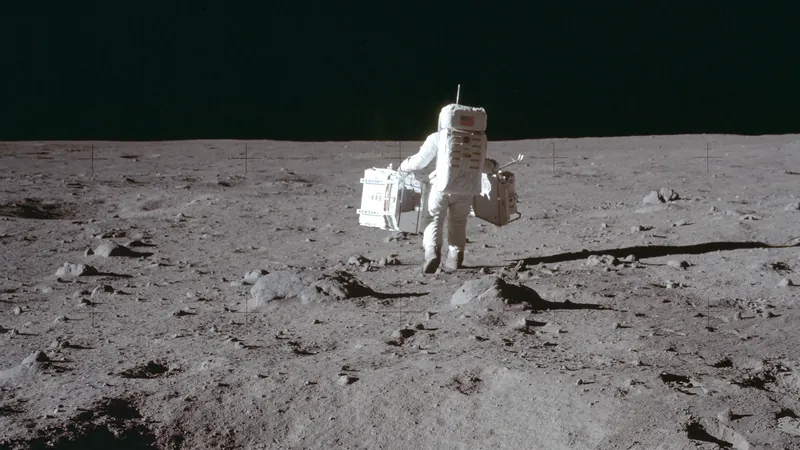
Unveiling the Moon's Explosive History: Tiny Orange Beads Discovered by Apollo Astronauts
2025-06-17
Author: Wei
A Cosmic Treasure from the Moon
Researchers have made a stunning discovery that shakes up our understanding of the Moon's fiery past: tiny orange beads found in lunar samples collected by Apollo astronauts. Each bead, measuring less than 1 mm, dates back between 3.3 to 3.6 billion years, formed during violent volcanic eruptions on the Moon’s surface when it was still in its infancy.
Ryan Ogliore, an associate professor at Washington University in St. Louis, describes these beads as some of the most extraordinary extraterrestrial samples in existence. "They are pristine capsules that offer insights into the lunar interior," he stated.
Cutting-Edge Technology Reveals Secrets
Using state-of-the-art microscopic analysis techniques that were not available during the Apollo missions, Ogliore and a team of researchers delved into the microscopic details of these lunar beads. Their groundbreaking study, published in the journal Icarus, was led by a talented team from Brown University, including Thomas Williams, Stephen Parman, and Alberto Saal.
The research utilized the NanoSIMS 50, a high-energy ion beam instrument from WashU, enabling a detailed examination of these ancient particles. For decades, this sophisticated tool has been instrumental in studying interplanetary materials.
Moon's Volcanic Eruptions Uncovered
The investigation blended various advanced techniques such as atom probe tomography, scanning electron microscopy, and energy dispersive X-ray spectroscopy, providing an unparalleled view of the samples. "We've had these intriguing artifacts for 50 years, but now our technology allows us to unlock their mysteries," Ogliore explained.
Each bead reveals its own unique story; some are strikingly shiny orange, while others gleam in glossy black. These beads originated from explosive lunar volcanoes, where molten lava shot up from the Moon’s core and solidified instantly in the vacuum of space. Ogliore likened these eruptions to fire fountains seen in Hawaii today, affirming the explosive nature of the Moon's volcanic activity.
Protecting the Uniqueness of Lunar Materials
To prevent contamination from Earth’s atmosphere, researchers meticulously extracted the beads from deep within the samples, ensuring they remained isolated from air throughout the analysis. Ogliore noted, "Despite our advanced technology, measuring these samples was a complicated task."
A Glimpse into the Moon's Volcanic Journals
The chemical composition of these lunar beads, including minerals like zinc sulfides, provides valuable insights into the varied pressure, temperature, and chemical conditions present during lunar eruptions billions of years ago. Analysis of both the orange and black beads indicates significant changes in volcanic activity over time. Ogliore described the findings as reading the "journal of an ancient lunar volcanologist," revealing a dynamic and explosive history previously hidden in the Moon's surface.



 Brasil (PT)
Brasil (PT)
 Canada (EN)
Canada (EN)
 Chile (ES)
Chile (ES)
 Česko (CS)
Česko (CS)
 대한민국 (KO)
대한민국 (KO)
 España (ES)
España (ES)
 France (FR)
France (FR)
 Hong Kong (EN)
Hong Kong (EN)
 Italia (IT)
Italia (IT)
 日本 (JA)
日本 (JA)
 Magyarország (HU)
Magyarország (HU)
 Norge (NO)
Norge (NO)
 Polska (PL)
Polska (PL)
 Schweiz (DE)
Schweiz (DE)
 Singapore (EN)
Singapore (EN)
 Sverige (SV)
Sverige (SV)
 Suomi (FI)
Suomi (FI)
 Türkiye (TR)
Türkiye (TR)
 الإمارات العربية المتحدة (AR)
الإمارات العربية المتحدة (AR)